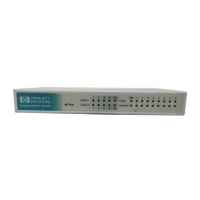97
You can configure GTSM in OSPF area view or interface view.
The configuration in OSPF area view applies to all OSPF interfaces in the area.
The configuration in interface view takes precedence over OSPF area view.
ou must configure GTSM on both the local and peer devices. You can specify
different hop-count values for them.
To configure GTSM in OSPF area view:
1. Enter system view.
system-view
N/A
2. Enter OSPF view.
ospf
[
process-id |
router-id
router-id |
vpn-instance
vpn-instance-name ] *
N/A
3. Enter OSPF area view.
area
area-id
N/A
4. Enable GTSM for the OSPF
area.
ttl-security
[
hops
hop-count ]
By default, GTSM is disabled for
the OSPF area.
To configure GTSM in interface view:
1. Enter system view.
system-view
N/A
2. Enter interface view.
interface
interface-type
interface-number
N/A
3. Enable GTSM for the
interface.
ospf ttl-security
[
hops
hop-count
|
disable
]
By default, GTSM is disabled for
the interface.
Configuring OSPF GR
GR ensures forwarding continuity when a routing protocol restarts or an active/standby switchover
occurs.
Two routers are required to complete a GR process. The following are router roles in a GR process:
GR restarter—Graceful restarting router. It must have GR capability.
GR helper—A neighbor of the GR restarter. It helps the GR restarter to complete the GR
process.
OSPF GR has the following types:
IETF GR—Uses Opaque LSAs to implement GR.
Non-IETF GR—Uses link local signaling (LLS) to advertise GR capability and uses out of band
synchronization to synchronize the LSDB.
A device can act as a GR restarter and GR helper at the same time.
Configuring OSPF GR restarter
You can configure the IETF or non-IETF OSPF GR restarter.

